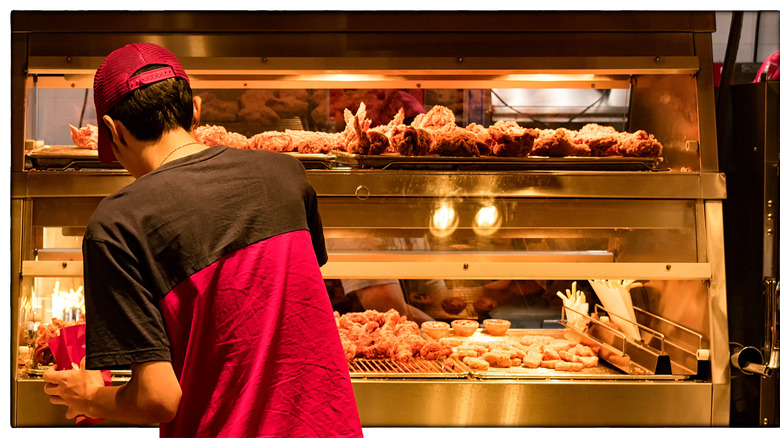Restaurants Lost Thousands Of Jobs In October, New Data Shows
Anyone who's worked a clock-punching job before will remember the iconic line from "Network" (1976) when fed-up news anchor Howard Beale declares, "I'm mad as hell and I'm not gonna take this anymore!" In the film, the line inspires a wave of viewers to follow suit, screaming the line out their windows in a long-overdue act of weary solidarity.
The restaurant industry has a famously high turnover rate. Now, in what the National Restaurant Association is calling "a sudden reversal from the recent positive trend," it looks like the employment tide shifted again last month and (surprise) folks aren't as enthusiastic about working in the industry as previous figures might have suggested. Citing figures from the Bureau of Labor Statistics (BLS), the outlet reported that "eating and drinking places" lost 7,500 jobs in October alone. This drop puts the industry at 14,000 jobs (-0.1%) below its staffing level in February 2020. So, what do these figures mean? On a broader scale, they mean that the restaurant industry still hasn't recovered from the pandemic.
Before the COVID-19 pandemic, the restaurant and food service industry employed roughly 15.6 million workers. In early October, it was looking like things were going back to normal. According to earlier BLS reports, workers were flocking back to restaurants in August and September, and the industry job pool was returning to pre-Covid levels. Now, restaurant workers are quitting in droves. The question is, why?
Workforce shifting toward jobs with better pay and working conditions
Signs point toward the U.S. labor revolution, which is itself symptomatic of a larger cultural boiling point. As the reservation-making platform OpenTable notes in a piece about the restaurant industry's labor shortage, "During lockdown, many restaurant workers realized their demanding, fast-paced jobs had taken a toll on their physical and mental health." Finding and retaining skilled staff is also crucial for businesses to stay afloat in this competitive restaurant scene as diners' disposable income dwindles. To make the situation worse, many non-industry workers are embracing a phenomenon known as "tip fatigue." Some customers have become more reluctant to tip, which can keep servers at a starvation wage.
This unflattering worker-employer relationship could be nearing an end. Workers are demanding health insurance, stability, and more say over their own day-to-day lives (which is arguably asking for the bare minimum). In September, Governor Gavin Newsom signed a bill that will raise the minimum wage to $20 per hour for all California fast food workers by April 1, 2024. In October, over 40,000 Culinary Union Members took to the Las Vegas Strip to picket for a renewed union contract. Efforts like these could change the industry — or at least provide some clarity to the more dimensional reality of the BLS's recent data. Restaurant employees might not be leaving the industry altogether Rather they're busy creating the radical industry reform necessary to make a food service career sustainable in the contemporary socioeconomic landscape.

